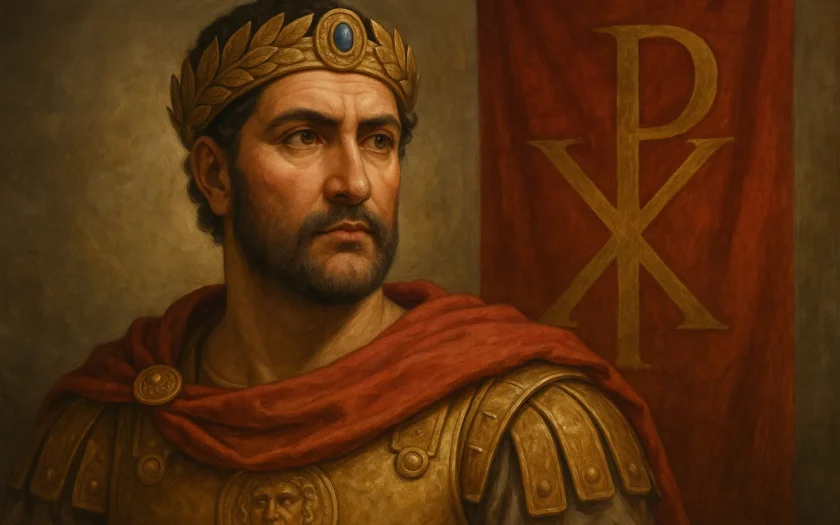The figure of Constantine I, known as Constantine the Great, marks a turning point in Western history. A skillful ruler, military strategist, and shrewd politician, his reign not only consolidated the Roman Empire after decades of crisis but also laid the foundations for Christianity’s expansion as the dominant religion. This biography explores his life, rise to power, role in the religious transformation of the empire, and his enduring legacy centuries later.
Origins and Youth
Son of a Modest Family
Constantine was born around 272 AD in Naissus (modern-day Niš, Serbia), son of Constantius Chlorus, a career military officer who rose to the position of Caesar, and Helena, a woman of humble origins who would later be canonized as a saint by the Christian Church.
His childhood unfolded in a Roman Empire in crisis, divided into several zones of power under the system known as the Tetrarchy, established by Diocletian to stabilize imperial administration. From an early age, Constantine witnessed the complex power balances that defined the politics of his time.
Military and Political Training
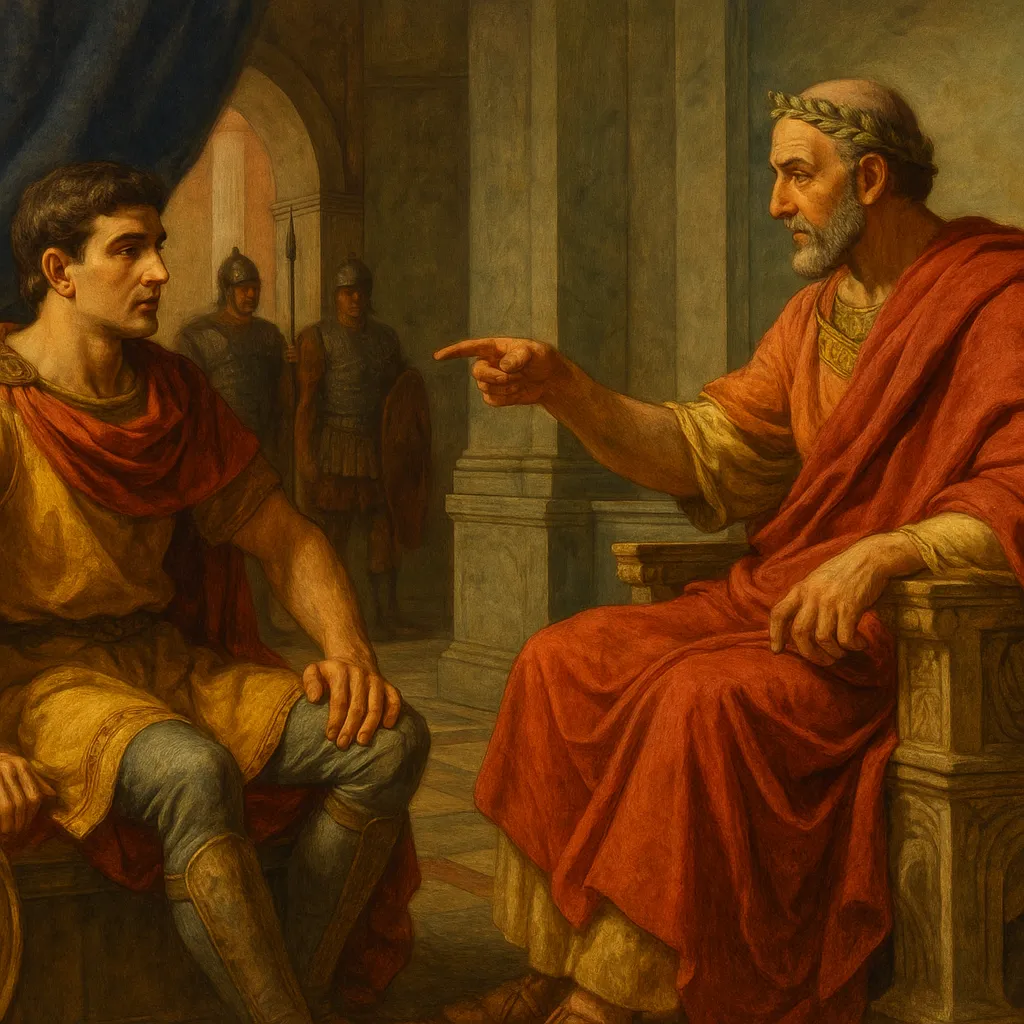
An Apprentice in the Imperial Court
As a young man, Constantine was sent to Diocletian’s court in Nicomedia, where he received firsthand military and political training. There he learned the arts of war, diplomacy, and state administration.
His time at court exposed him to palace intrigues and the internal tensions of the Tetrarchic system. Although effectively a political hostage, he skillfully navigated this environment, gaining experience that would prove decisive later.
Rise to Power
The Death of Constantius Chlorus
In 306 AD, after his father’s death in Britain, the troops proclaimed Constantine as Augustus (Emperor), challenging the rigid Tetrarchic system. This event triggered a series of internal conflicts, with multiple claimants vying for supremacy.
In the following years, Constantine waged numerous military campaigns to consolidate his authority, first against other tetrarchs and later against his most formidable rival: Maxentius.
The Battle of the Milvian Bridge
The Defining Moment
The climax of his rise came in 312 AD, at the Battle of the Milvian Bridge outside Rome. Before the battle, according to Christian tradition, Constantine had a vision of a shining cross in the sky accompanied by the inscription: “In hoc signo vinces” (In this sign, you will conquer).
He ordered his soldiers to paint the Christian symbol on their standards and shields. The victory over Maxentius allowed him to enter Rome triumphantly and consolidate his rule over the Western Empire.
This event marked the beginning of the close relationship between the imperial throne and Christianity.
Legalizing Christianity
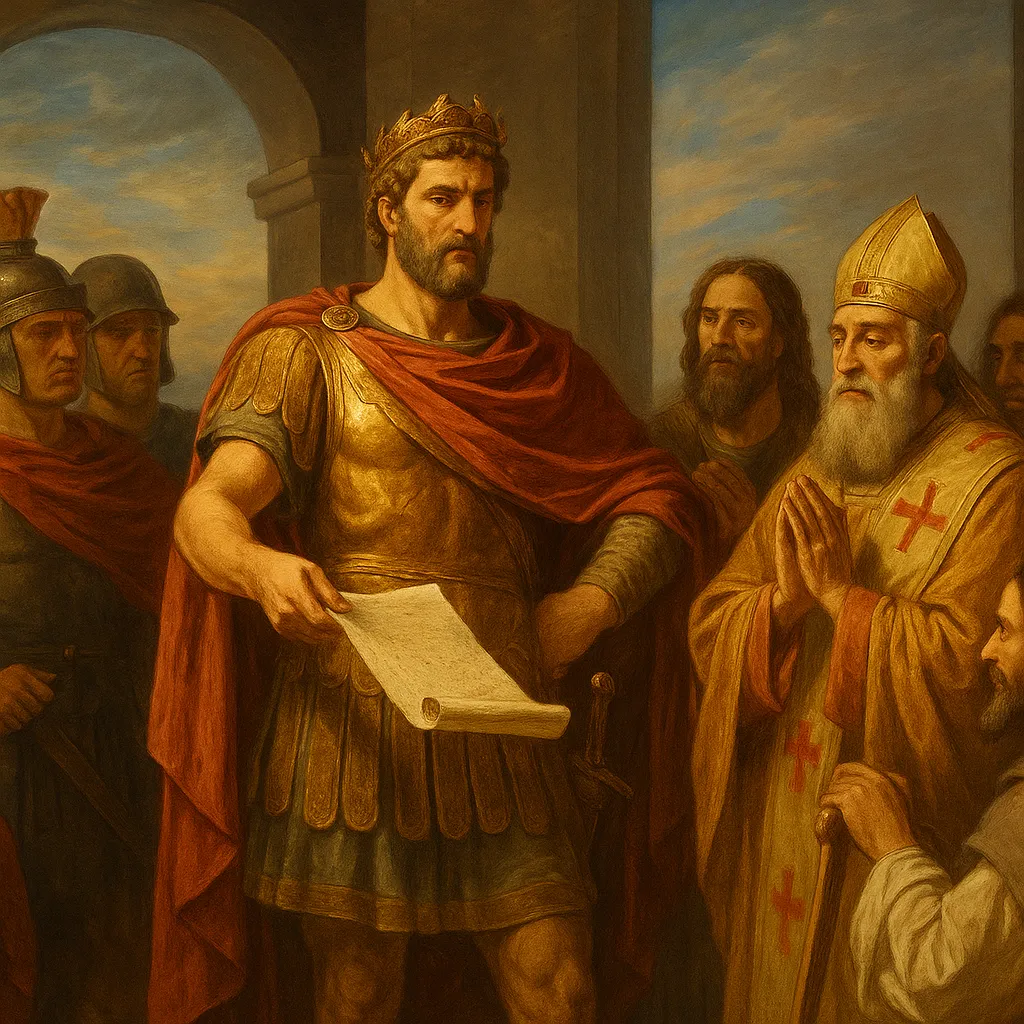
A Revolutionary Religious Policy
In 313 AD, Constantine, together with Licinius (Eastern Emperor), issued the famous Edict of Milan, granting freedom of worship to all religions in the empire and ending the persecution of Christians.
Although Christianity did not yet become the official state religion (that would happen later), the edict represented a radical shift in Roman religious policy. Christians transitioned from being persecuted to receiving privileges, lands, and state support.
Consolidation of Power
The Defeat of Licinius
The alliance with Licinius quickly deteriorated. In 324 AD, Constantine decisively defeated him at the Battle of Chrysopolis, becoming the sole emperor of a reunified empire.
With absolute control, he could advance his political and religious program without opposition. From this moment, Christianity occupied a central place in the state apparatus, though Constantine pragmatically allowed traditional cults to coexist during his reign.
The Foundation of Constantinople
The New Capital of the Empire
One of Constantine’s most tangible legacies was founding a new capital on the site of the ancient Greek settlement of Byzantium, which he renamed Constantinople in 330 AD.
Strategically located between Europe and Asia, the city symbolized the new political and religious order. Constantinople would remain for over a thousand years the heart of the Byzantine Empire and the stronghold of Orthodox Christianity.
Its urban design included Christian temples, forums, palaces, and fortifications that made it one of the most impregnable cities in history.
The Council of Nicaea
The First Ecumenical Council
In 325 AD, Constantine convened the Council of Nicaea, the first major gathering of Christian bishops from across the empire, aiming to unify doctrine and resolve internal disputes, especially the Arian heresy, which denied the full divinity of Christ.
The council produced the Nicene Creed, still recited in Christian liturgy today. Though not a theologian, Constantine recognized the importance of a unified church for political stability.
This act cemented his role as supreme arbiter in religious matters, inaugurating the Caesaropapism model that would characterize the Byzantine Empire.
Constantine’s Conversion
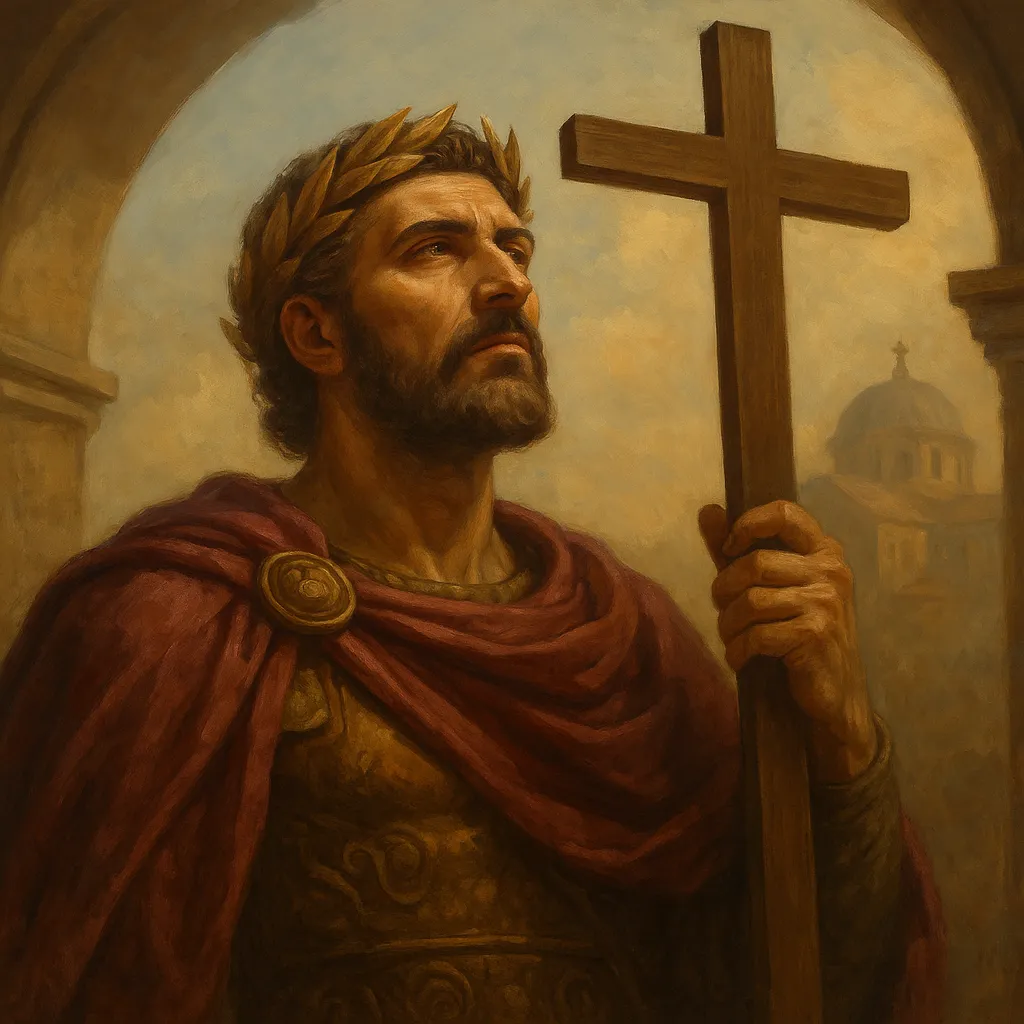
A Pragmatic Christianity
Though he strongly favored Christianity, Constantine was not baptized until shortly before his death in 337 AD. This delay has sparked debate:
- Some suggest political motives: maintaining authority among the still powerful pagan aristocracy.
- Others cite the custom of some Christians delaying baptism until late in life for full absolution of sins.
In any case, his sympathy for the new faith was evident throughout his reign.
Internal Policies and Administration
Enduring Reforms
Beyond his religious role, Constantine implemented significant administrative and economic reforms:
- Reorganized the army and frontier defenses.
- Established a more centralized tax system.
- Introduced the solidus, a stable gold coin that revitalized the imperial economy.
- Reformed the imperial judicial system.
These reforms strengthened the imperial machinery and prolonged the empire’s life for centuries.
Criticisms and Dark Aspects of His Reign
A Complex Government
Constantine’s figure is not without controversy. During his lifetime, he ordered political executions, including those of his own son Crispus and his wife Fausta, for reasons still debated by historians.
His conversion to Christianity is also viewed by some as a strategic maneuver rather than genuine spiritual conviction, though others defend the sincerity of his faith.
His alliance with the Church established the complex relationship between political and religious power that would shape European history for centuries.
Death and Legacy
A New Imperial Order
Constantine died in Nicomedia in 337 AD, after 31 years of rule. He was buried in the Church of the Holy Apostles in Constantinople, as the first Christian emperor.
His legacy is vast:
- A unified and strengthened empire.
- Institutionalization of Christianity.
- Creation of Constantinople as the new capital.
- The enduring Church-State relationship of the Byzantine Empire.
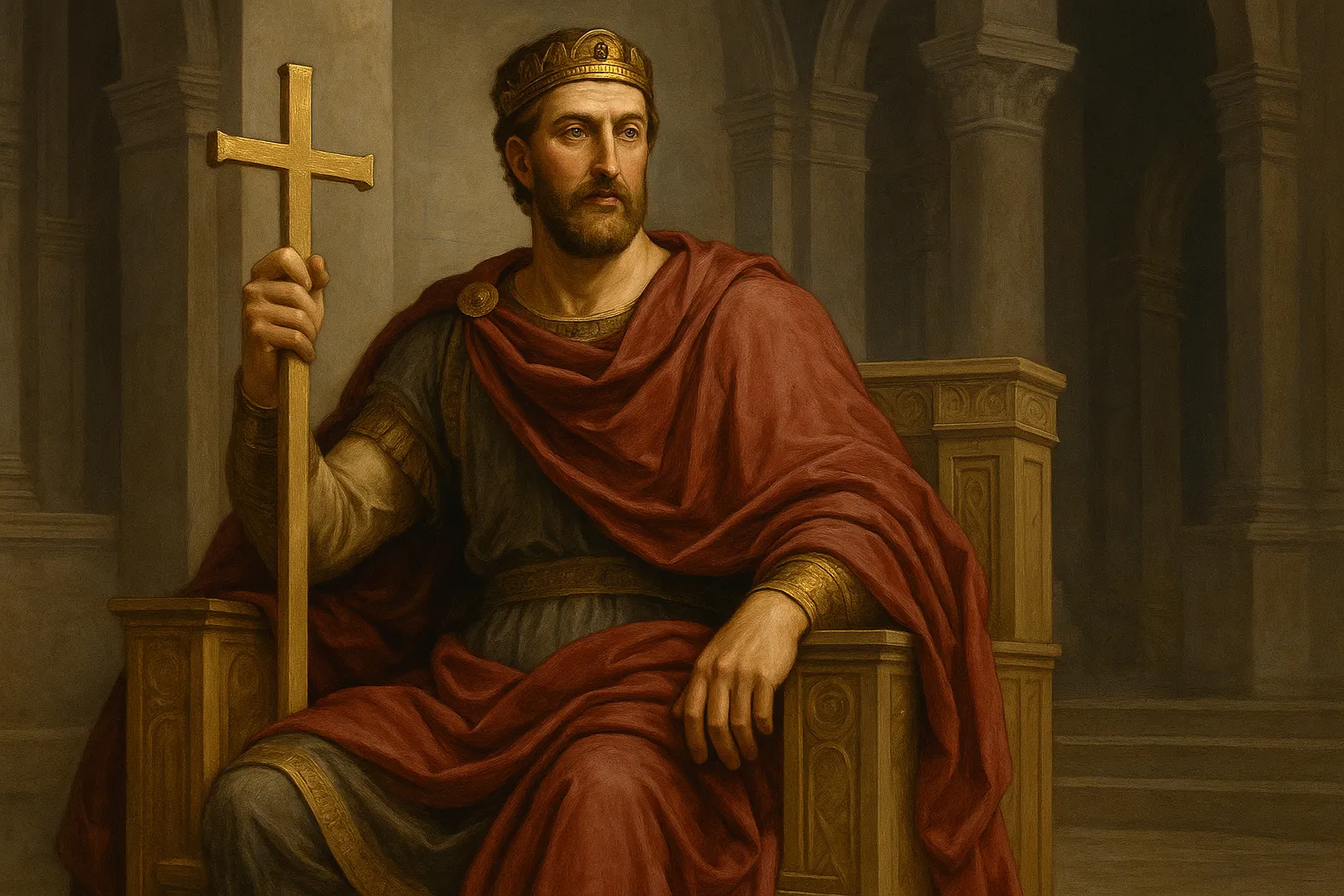
The figure of Constantine the Great remains a subject of study, debate, and fascination for his ability to transform a pagan and declining empire into a new Christian civilization that endured for over a millennium.
The life of Constantine I represents one of the greatest turning points in Western history. His political skill, military genius, and religious pragmatism saved the Roman Empire from imminent fragmentation and transformed it into the precursor of the medieval Christian world.
Through his reign, Christianity evolved from a persecuted sect to the central axis of European culture. His founding of Constantinople and his intervention in church doctrine shaped European, Byzantine, and Christian history for centuries.
Constantine not only transformed an empire; he altered the very course of Western civilization.

